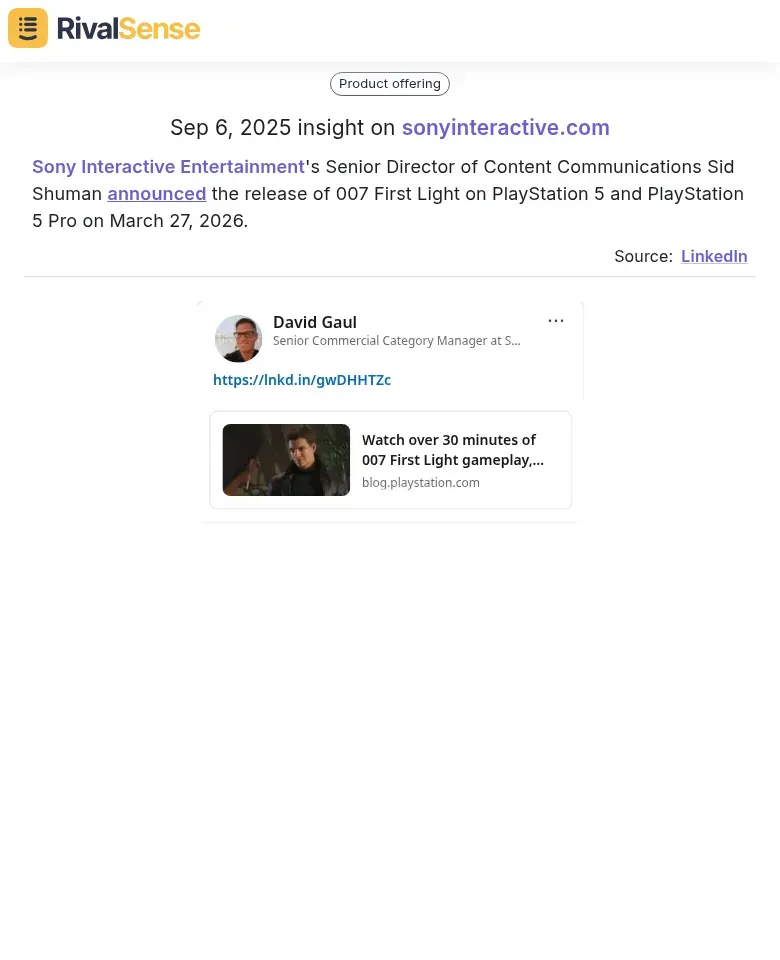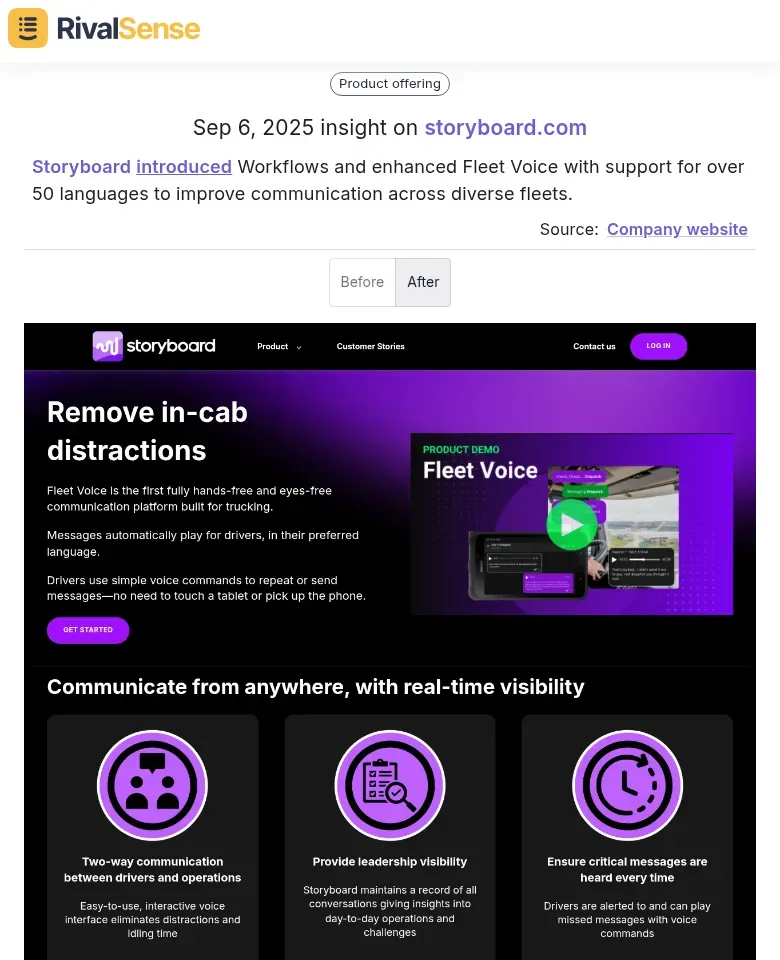How to Do Competitor Target Audience Analysis: A Practical B2B Guide
September 8, 2025
RivalSense Competitive Intelligence Team
Competitors aren't just stealing your prospects—they're targeting the exact same audience you want to reach. The difference between winning and losing often comes down to who understands that audience better. While traditional competitor analysis focuses on products and pricing, the most strategic advantage comes from understanding your competitors' target audiences.
What is Competitor Target Audience Analysis?
Competitor target audience analysis is the process of identifying and understanding the specific customer segments your competitors are targeting, including their demographics, psychographics, behaviors, and pain points. It goes beyond basic competitive analysis to answer critical questions about who your competitors are actually talking to and what messaging resonates with those audiences.
Why This Analysis is Your Secret Weapon
1. Discover Untapped Market Opportunities
By analyzing competitor audiences, you often find segments they're overlooking or underserving. These gaps represent immediate opportunities for market expansion and strategic positioning.
2. Refine Your Positioning
Understanding how competitors position themselves to specific audiences helps you differentiate more effectively. For example, tracking management movements can reveal strategic shifts: when Lucas Paus left Ualá as Chief Information Security Officer to join BIND Banco Industrial as CISO, it signaled both companies' heightened focus on security and potential new market priorities.

3. Optimize Marketing Spend
Knowing where competitor audiences congregate helps you allocate resources more efficiently to channels that actually reach your target customers.
Practical 6-Step Framework for Competitor Audience Analysis
Step 1: Identify Key Competitors and Their Audience Signals
Start with both direct and indirect competitors. Look for audience indicators across website copy, social media followers, customer reviews, and content topics.
Practical Tip: Create a spreadsheet tracking each competitor's apparent target demographics, psychographics, and value propositions.
Step 2: Analyze Social Media Audience Demographics
Use social listening tools or platform analytics to understand age ranges, geographic concentrations, interests, and engagement patterns.
Checklist: For each competitor, document:
- [ ] Primary age demographic
- [ ] Geographic focus areas
- [ ] Key interests/topics discussed
- [ ] Content types that perform best
Step 3: Conduct Sentiment Analysis on Competitor Customers
Analyze what customers are saying about your competitors across review sites, social media comments, and forum discussions. Look for patterns in pain points, praise points, and emotional triggers.
Step 4: Map Content and Messaging Strategies
Analyze competitor content to understand who they're targeting through blog topics, email marketing, webinars, and case studies.
Practical Example: If a competitor's case studies consistently feature mid-market companies in healthcare, they're likely targeting that segment specifically.
Step 5: Analyze Pricing and Packaging for Audience Clues
Pricing often reveals target audience segments, with enterprise pricing suggesting large organizations and freemium models targeting individual users.
Step 6: Identify Audience Gaps and Opportunities
Compare your findings across competitors to identify overserved audiences, underserved segments, messaging gaps, and channel opportunities.
How RivalSense Simplifies Competitor Audience Analysis
Manually tracking competitor audience shifts across multiple sources is challenging. RivalSense provides automated audience intelligence by continuously monitoring social media patterns, content performance, and review sentiment.
Real-time Product Launch Tracking
Monitoring competitor product releases can reveal new audience targeting strategies. For instance, when Sony Interactive Entertainment's Senior Director announced 007 First Light for PlayStation 5 and PlayStation 5 Pro, it signaled their continued focus on gaming enthusiasts and early adopters.

Competitive Audience Benchmarking
RivalSense enables comparison of audience metrics against competitors across demographic reach, engagement rates, sentiment scores, and growth trends.
Actionable Insights: Turning Analysis into Strategy
Immediate Actions Based on Findings:
- Messaging Refinement: Analyze competitor messaging and differentiate yours
- Channel Optimization: Double down on channels where competitor audiences are engaged but underserved
- Product Positioning: Address pain points competitor customers experience
- Pricing Strategy: Adjust pricing to better serve segments competitors are overcharging
Feature Update Intelligence
Tracking competitor feature releases provides direct insight into their audience targeting. When Storyboard introduced Workflows and enhanced Fleet Voice with support for over 50 languages, it clearly indicated their expansion into global markets and diverse fleet operations.

Common Pitfalls to Avoid
- Assuming static audiences - Competitor targets evolve constantly
- Over-relying on demographic data - Psychographics often matter more
- Ignoring indirect competitors - They may be targeting your audience differently
- Analysis without action - Insights must drive strategic decisions
Getting Started with Minimal Resources
Even without advanced tools, you can begin competitor audience analysis through manual social media analysis, review monitoring, content analysis, and customer interviews.
When to Consider Automated Solutions
As your business grows, manual analysis becomes unsustainable. Consider automation when tracking more than 5 competitors, needing real-time alerts on audience shifts, or expanding into new markets.
Conclusion: Audience Intelligence as Competitive Advantage
Understanding your competitors' target audiences isn't just about knowing who they're selling to—it's about understanding why those audiences choose them and where opportunities exist for you to serve them better. The most successful businesses understand competitor audiences better than the competitors themselves.
Ready to transform competitor audience analysis from manual chore to strategic advantage? Try RivalSense for free to get automated intelligence on competitor audience shifts and targeting strategies. Get your first competitor report today and start making data-driven audience decisions.
📚 Read more
👉 Risk Management in Key Account Strategy: A Practical Guide
👉 How Adyen Capitalized on Stripe's Blockchain Bet: A Strategic Playbook for B2B Leaders
👉 Twitter Competitor Insights: Actionable Cultural Alignment Strategies
👉 7 Aviation Defense Productivity Boost Techniques: From Talent to Tech
👉 Event Intelligence Workflow: Uncover Competitor Strategies for Key Account Loyalty
